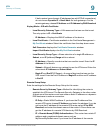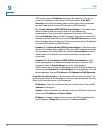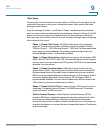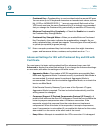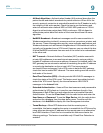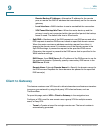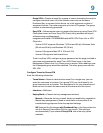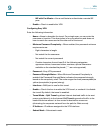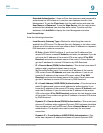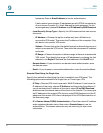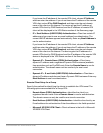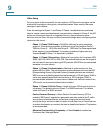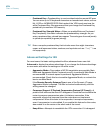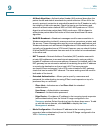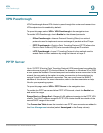
VPN
Client to Gateway
Cisco RV320/RV325 Administration Guide 93
9
• Extended Authentication—Uses an IPsec host username and password to
authenticate the VPN clients or it uses the user database found in User
Management. To use the IPsec Host, click the radio button and enter the
User Name and Password. To use the Edge Device, click the radio button
and select the database from the drop-down menu. To add or edit the
database, click Add/Edit to display the User Management window.
Local Group Setup
Enter the following information:
• Local Security Gateway Type—Method for identifying the router to
establish the VPN tunnel. The Remote Security Gateway is the other router.
At least one of the routers must have either a static IP address or a dynamic
DNS hostname to make a connection.
- IP Only—Static WAN IP address. If you know the IP address of the
remote VPN router, choose IP Address, and enter the address. If you do
not know the IP address of the remote VPN router, select IP by DNS
Resolved, and enter the domain name of the router. A Cisco router can
get the IP address of a remote VPN device by DNS Resolved.
- IP + Domain Name (FQDN) Authentication—This device has a static IP
address and a registered domain name, such as
MyServer.MyDomain.com. If you know the IP address of the remote
VPN router, choose IP Address, and enter the address. If you do not
know the IP address of the remote VPN router, select IP by DNS
Resolved, and enter the domain name of the router. Cisco routers can
get the IP address of remote VPN device by DNS Resolved.
- IP + E-mail Address (USER FQDN) Authentication—This device has a
static IP address and uses an email address for authentication. If you
know the IP address of the remote VPN router, choose IP Address, and
enter the IP address. If you do not know the IP address of the remote
VPN router, select IP by DNS Resolved, and enter the real domain name
of the router. Cisco routers can get the IP address of remote VPN device
by DNS Resolved.
- Dynamic IP + Domain Name (FQDN) Authentication—This router has a
dynamic IP address and a registered Dynamic DNS hostname (available
from providers such as DynDNS.com). Enter a Domain Name to use for
authentication. The domain name can be used only for one tunnel
connection.
- Dynamic IP + E-mail Address (USER FQDN) Authentication—This
router has a dynamic IP address and does not have a Dynamic DNS



